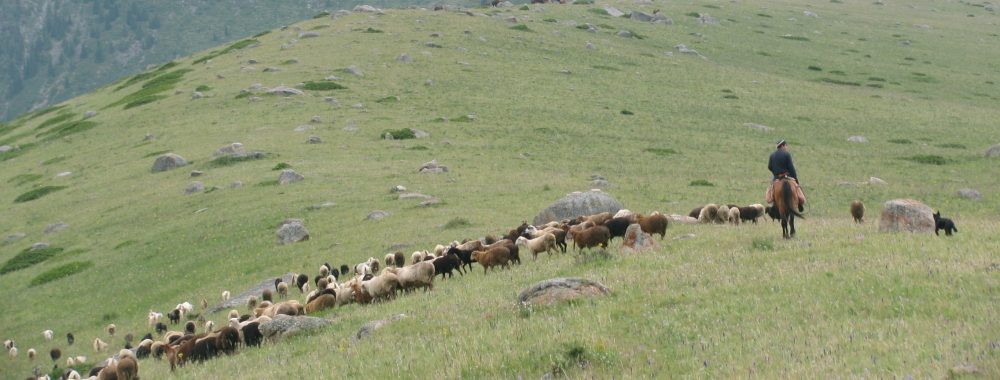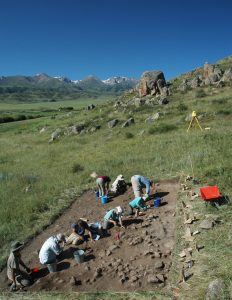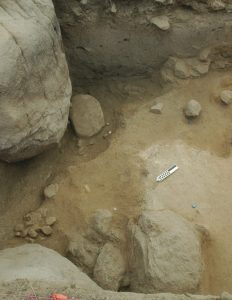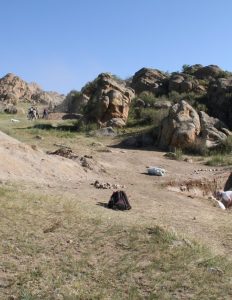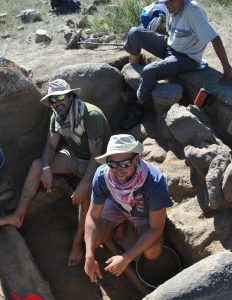Scientists found out how millet appeared in Kazakhstan
New research by scientists from Nazarbayev University, the A.Kh. Margulan Institute of Archaeology in Almaty, Washington University in St. Louis (USA) and Kiel University (Germany) shows that the initial transmission of millet across the mountains of Inner Asia coincided with a strong connection between herding and plant cultivation. Their findings were published on 4th September in the article «Early integration of pastoralism and millet cultivation in Bronze Age Eurasia» in the “Proceedings of the Royal Society B”.
The study used ancient DNA to identify the remains of domesticated sheep and goat dating to 2700 BC at the newly discovered Early Bronze Age site Dali, in the Dzhungar Mountains of southeastern Kazakhstan. Stable isotope analysis revealed that these animals were fed millet in order to help them survive the harsh winters of Inner Asia.
-Millet grows quickly and has a distinct carbon isotopic composition compared to that of the vegetation of the local mountains and steppe lowlands. We were able to clearly see that animals were consuming millet from the Early Bronze Age through the Iron Age, – said Dr. Taylor Hermes, a post-doctoral researcher at Kiel University and lead author of the study.
Such an early date for domesticated sheep and goats in Inner Asia that were also foddered with millet suggests that herding was essential for moving this crop farther west from Chinese communities who were invested in millet and pigs. Our work highlights a special relationship between herding and cultivating plants, according to Dr. Hermes.
Having studied human burials in two small pastoralist settlements, Begash and Tasbas, in the Dzhungar Mountains (Kazakhstan), the team hypothesized that domesticated cereals initially spread to Inner Asia as traded goods, rather than as staple foods. Carbonized seeds of wheat, barley, and broomcorn millet in human cremation cists (ca 2500–2200 BC) represent the earliest evidence of people exchanging crops through Inner Asia.
– The immense contribution that plant cultivation made to the local herding economy may be why people living at Tasbas and Begash chose to incorporate grains into their community-based rituals. The appearance of wheat and barley in their graves, along with the millet, now makes us wonder about the role of other crops in this mountain region, – said Paula Dupuy, Assistant Professor of Anthropology, School of Sciences and Humanities, Nazarbayev University.
While evidence for people at Dali eating millet remains ambiguous, this new study raises the possibility that growing crops was aimed at animals. The researchers found that millet consumption in animal diets was variable, likely due to the shifting social and environmental circumstances of a nomadic way of life.
-Now we know that millet was more than a ritual item. Millet was a prized crop for sustaining healthy herds and, in essence, being a better pastoralist, – Dr. Hermes said.
The study draws upon excavations and museum collections as part of a longstanding scientific partnership between Washington University, led by Michael Frachetti, and the Margulan Institute of Archaeology in Almaty, Kazakhstan. The study was also supported by a European Research Council funded project called “ASIAPAST” held by Cheryl Makarewicz of Kiel University.

Information for this article is given by Paula Dupuy, Kuralay Baimenova


